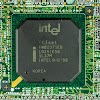What is the network security?
Network security refers to the practice of securing computers and devices in a network from unauthorized users and attacks. Network security can range from simple procedure such as using a username and password to using complex network devices to protect a network. When you connect to the Internet, your computer and/or network is exposed to a public network where anyone could possibly attack and gain access to resources including data. You can implement certain measure such as using a firewall to protect a computer or a network from such situations.
Firewall
Firewalls are software or
hardware devices that protect a computer and/or a network by analyzing and
controlling both incoming and outgoing network traffic. Firewalls act like a
window between internal and external network allowing authorized users to
access resources. Most operating systems include a software firewall and are configured
to keep your computer secure.
Windows Firewall
Windows Firewall is a built-in firewall software bundled and installed by default on most Microsoft Windows Operating systems like Windows XP, Vista & 7. Lab: View Windows Firewall Status Click Start > Run and type FIREWALL.CPL. Click OK Windows Firewall protects the computer by using the default settings (firewall rules) that can be modified anytime. Most commonly used network applications such as web browsers, email client software, etc. work without the need for modifying the settings on the firewall. Some network applications may not work as intended if it is blocked by the firewall (for example, an antivirus software may not be able to update itself from the Internet); in such cases, you need to add the application to the exception list indicating that application is permitted to use the network or the Internet.
Anti Virus Software
Antivirus software can help in
protecting your computer against viruses. It is highly recommended that you use
an antivirus software and most importantly, keep it up to date! Some of the
popular antivirus software vendor include AVG, AVAST, McAfee, Symantec, Kasper
sky, Microsoft, etc.

What is the Troubleshooting network?
You have learnt a variety of utilities and concepts. When you manage a network, it is quite common to face a number of issues related to network or Internet connectivity. Always check for any recent changes made to a computer or network before starting to troubleshoot; it’s most likely that you find a clue that will save time. Some of the well known error messages include:
•
Network
cable unplugged: Indicates
issue with cable; check if the cables are properly connected to both computer
and network switch or SOHO Router. Use alternate cables to confirm.
•
Limited
or No Network Connectivity: Indicates issue with network card
or IP settings, later more common. Check if the computer is configured
as a DHCP client and verify its IP address, gateway and other relevant
settings.
•
The
Network Path cannot be found: Indicates issue with network card,
IP settings or Name resolution problems. Use the File and Print Sharing
troubleshooting procedure.
•
Windows
has detected an IP address conflict: Indicates issue with IP address;
assign another static IP address that is different than the one assigned
to other computers within the same network.
•
A
duplicate name exists on the network: Indicates two or more computers
in a network have the same name; assign another computer name that
is different than the one assigned to other computers. Use the
following checklist and scenarios as a general guideline when
troubleshooting:
•
Unable
to connect to a network (LAN): If you are unable to connect to another
computer on the same network, do the following:
•
Verify
the cables are connected properly at both ends.
1. Use a cable tester if
required.
2. Replace RJ45
Jacks or use different cable if
possible.
3. Check LED indicators on the
NIC to verify connectivity status, interpret based on NIC product manual.
•
Check
if the NIC is installed and working properly using Device Manager.
1. Sometimes the device drivers
may be updated when operating system downloads and installs updates automatically.
In some cases, updated drivers may be pushed through special software bundled
along with device drivers. Typically updated drivers work properly as they
address technical issues caused in earlier versions.
Troubleshooting Model
As general practice,
you need to adopt a troubleshooting model that can help you stay organized and
troubleshoot effectively. Following is a general guideline:
• Gather Information about the Issue or Statement.
1. Probe to
differentiate if it is a request or an issue.
2. Probe to find out
if it is affecting single computer or an entire network.
• Determine if any recent changes were made.
1. Examples: was any
software downloaded and installed with or without their knowledge, any settings
was changed, any hardware device added or removed.
• Determine the most probable cause.
• Create an action plan.
• Verify the result and apply preventive measures.
• Document the resolution. Though this gives you a broad picture about troubleshooting, you may have to use additional resources in certain situations.












0 Comments